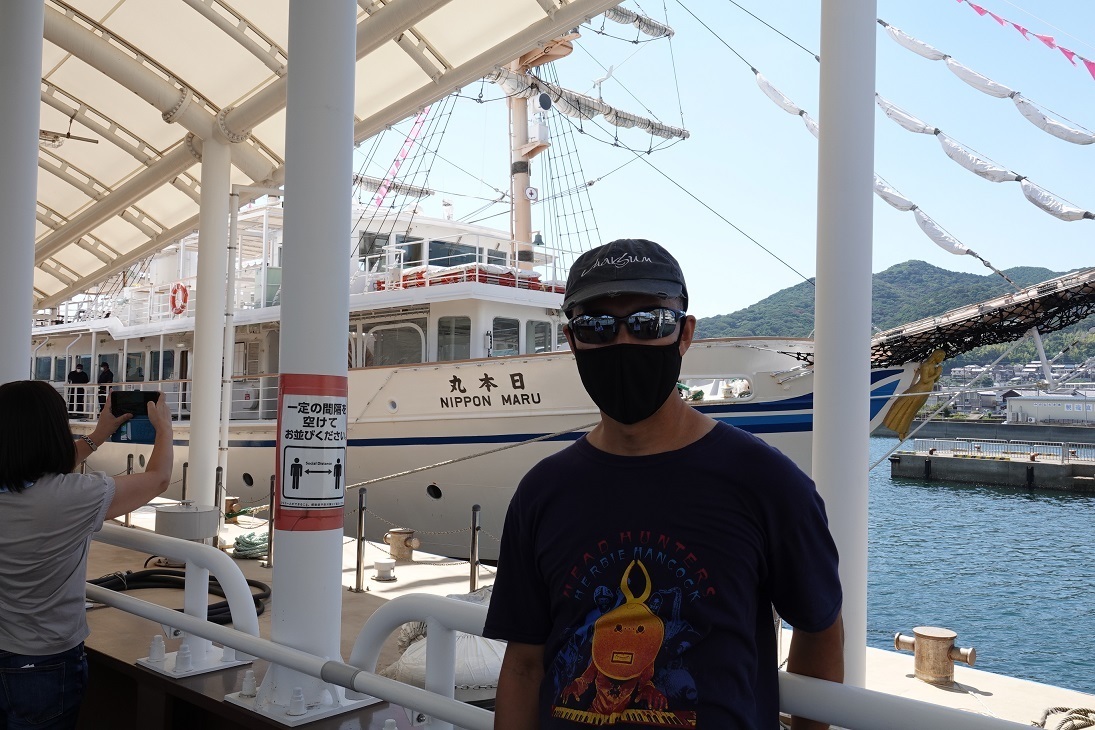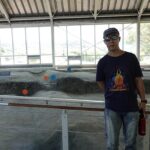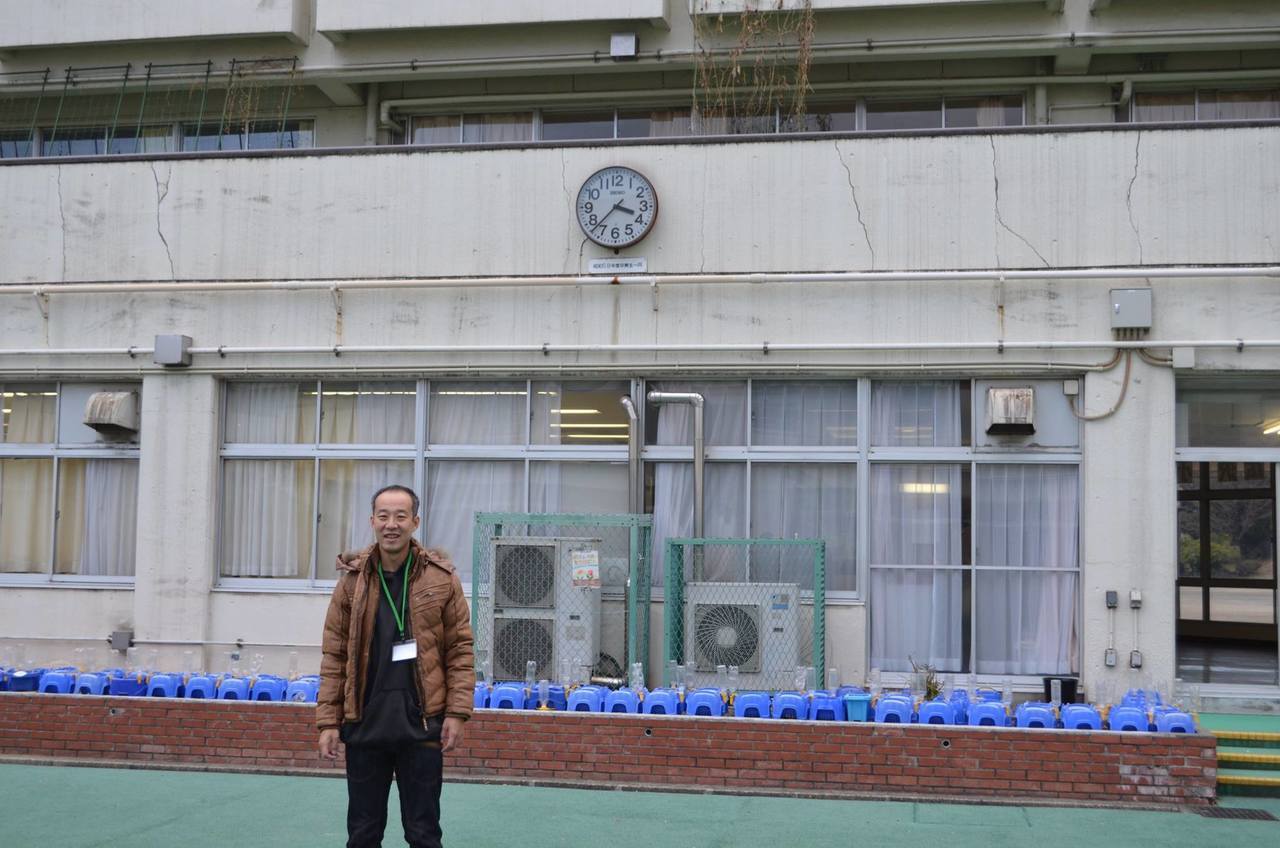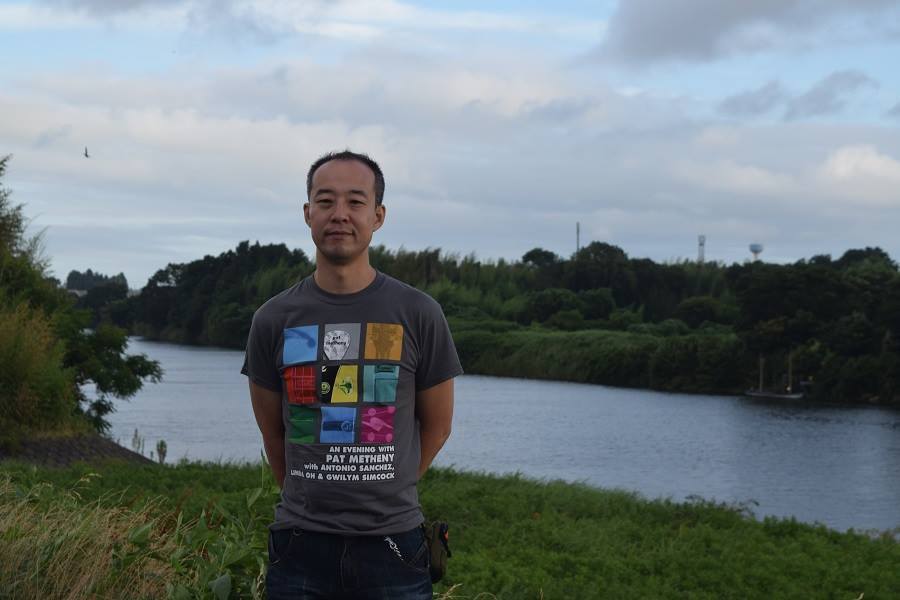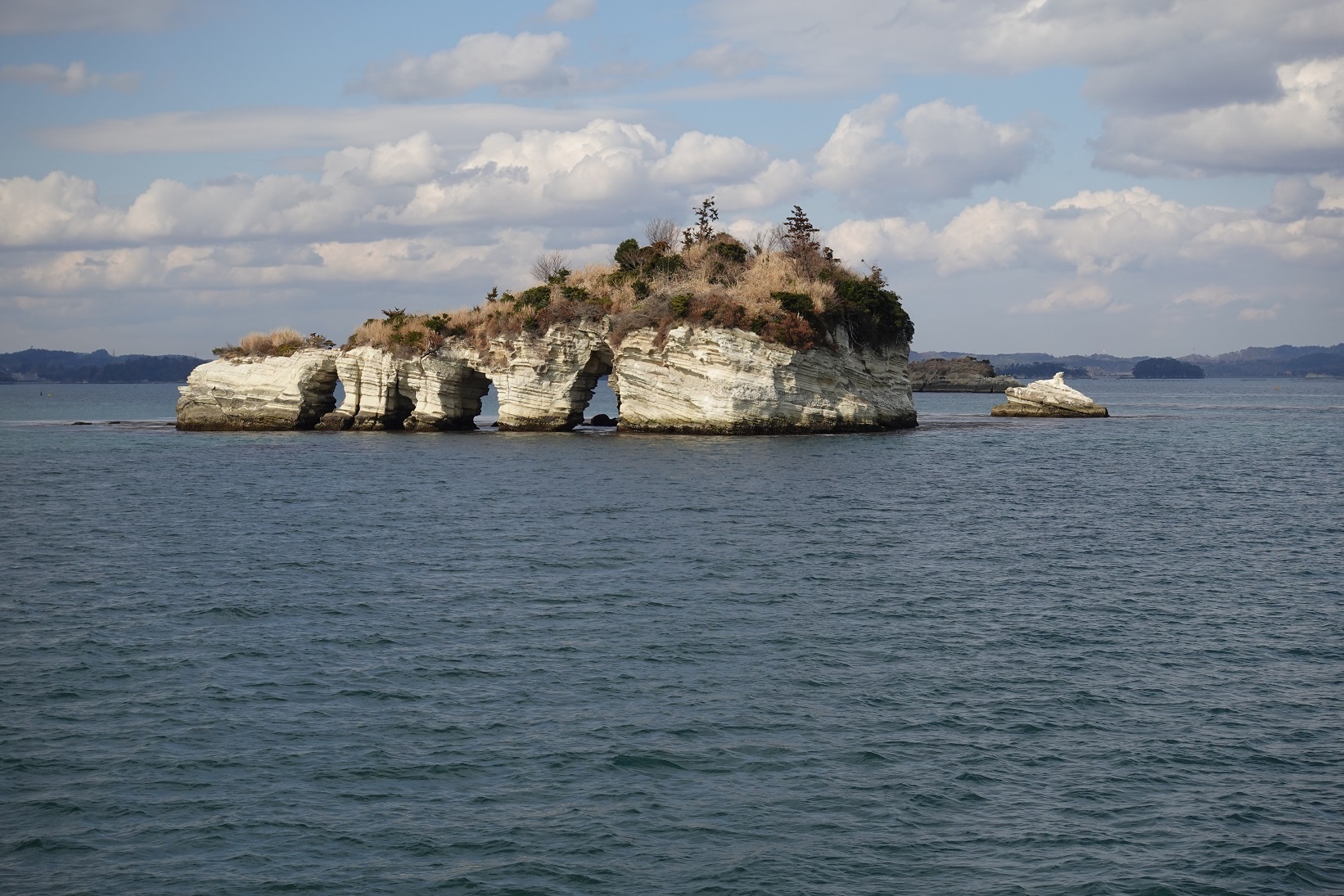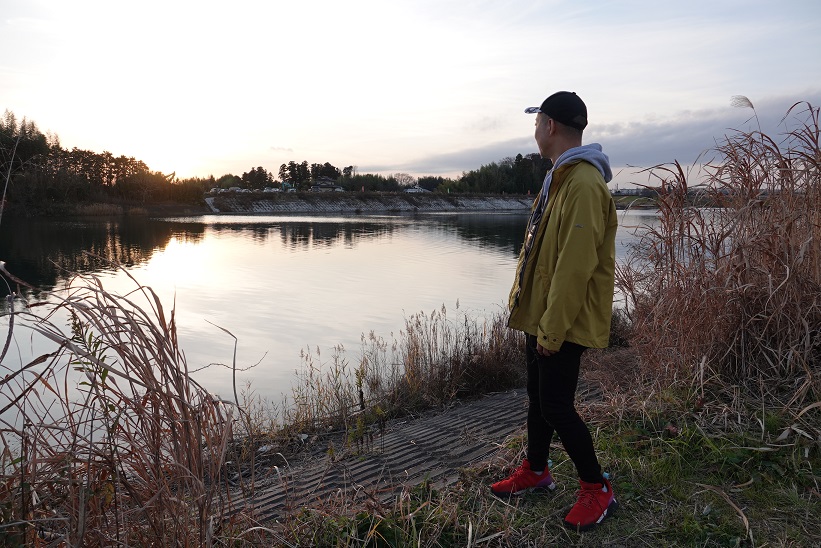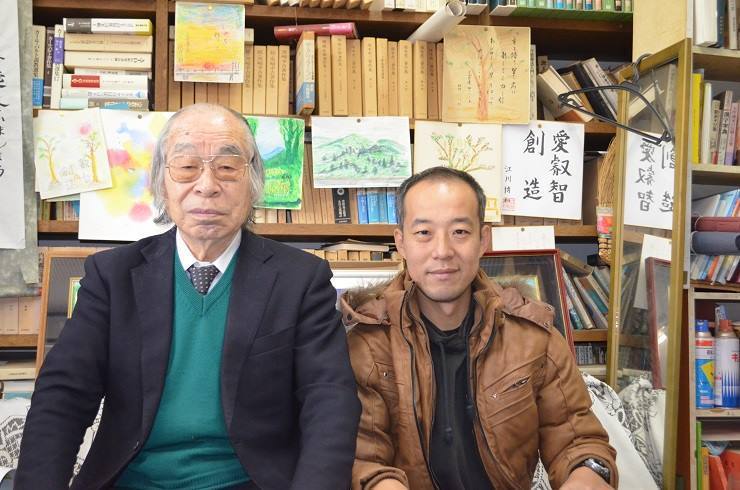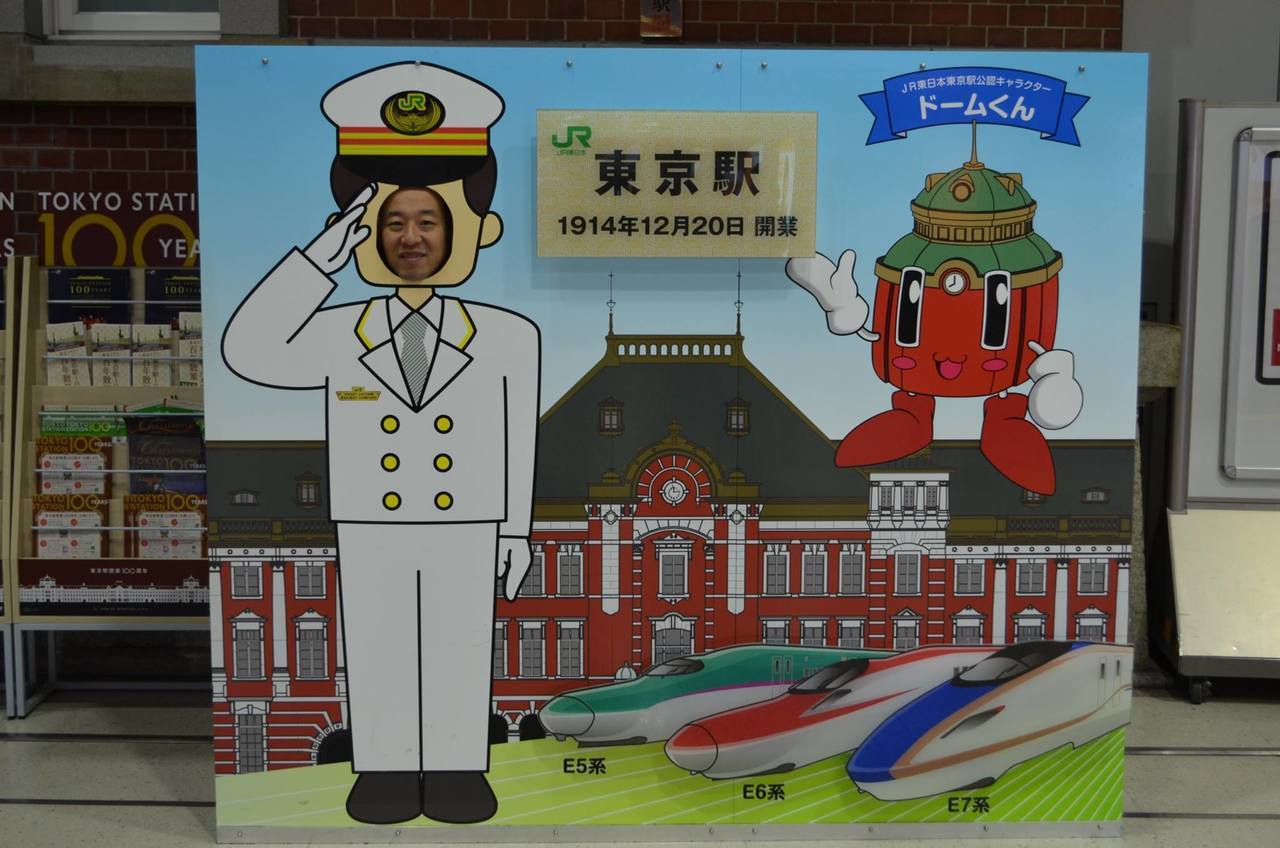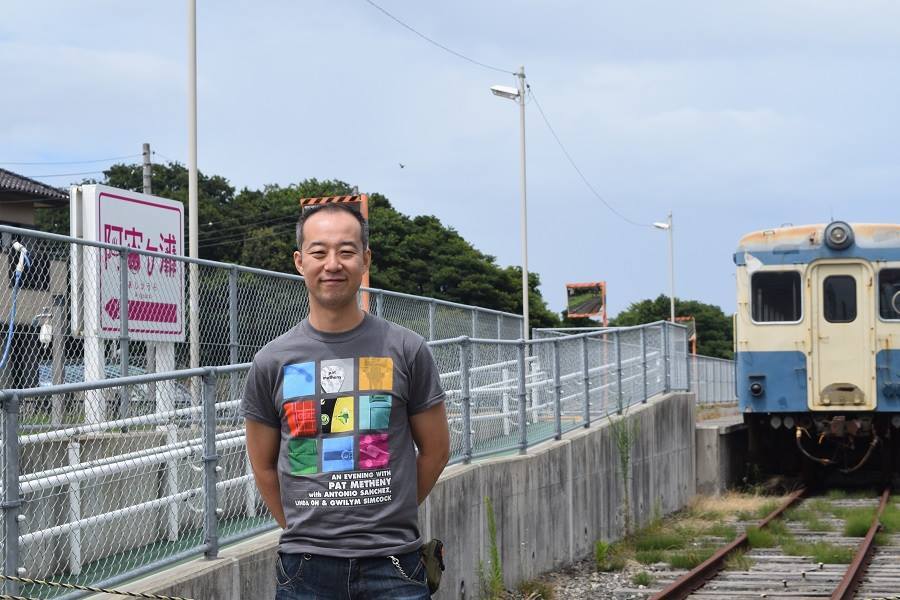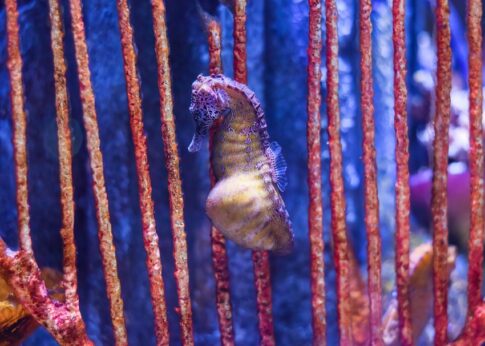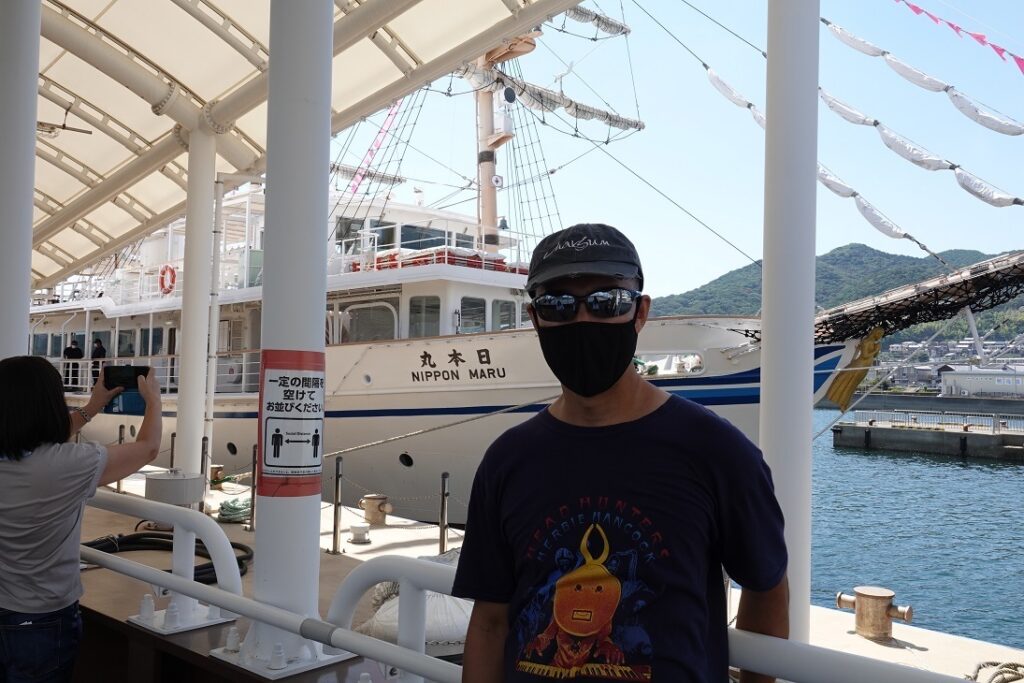




日本語
淡路島旅行のハイライトとして、徳島県の鳴門と兵庫県の淡路島との間にある鳴門海峡にて有名な渦潮を鑑賞しました。
この海峡は太平洋と瀬戸内海を繋ぐ場所の一つです。瀬戸内海は、日本を構成する主要な島のうちの二つ、すなわち本州と四国とを分け隔てる水域です。
潮の干満によって一日に二回、大量の水が瀬戸内海に流れ込み、同様に一日に二回、そこから運び去られます。これによって瀬戸内海と太平洋との間に、1.5メートルにも及ぶ水面差が生じます。
海峡はとても狭いため、ここを通過する水の速度は一日に四回、時速約13から15キロに達し、大量の渦が発生します。
今になって思えば、この珍しい自然現象の魅力を余すことなく記録するために動画を撮っておくべきでした。

英語 (English)
As the highlight of my journey to Awaji Island, I enjoyed watching the famous tidal whirlpools in the Naruto Strait, located between Naruto in Tokushima Prefecture and Awaji Island in Hyogo Prefecture.
The strait is one of the connections between the Pacific Ocean and the Seto Inland Sea, a body of water separating Honshu and Shikoku, two of the main islands of Japan.
Due to the flux and reflux of the tides, large amounts of water are moved into the Seto Inland Sea twice a day, and are removed therefrom twice a day as well, thus creating a difference in the water level of up to 1.5 m between the Seto Inland Sea and the Pacific Ocean.
Since the strait is very narrow, the speed of the water rushing through it reaches about 13 to 15 km/h four times a day, and then a number of vortices are created.
Looking back now, I should have video-recorded them to capture the full charm of this rare natural phenomenon.

ドイツ語(Deutsch)
Als Höhepunkt meiner Reise nach der Insel Awaji habe ich es genossen, die berühmten Gezeitenstrudel in der Meerenge von Naruto, die zwischen Naruto in der Präfektur Tokushima und der Insel Awaji in der Präfektur Hyogo liegt, zu beobachten.
Durch Ebbe und Flut werden zweimal täglich große Wassermengen in das Seto-Binnenmeer geleitet und ihm auch zweimal täglich entzogen, wodurch ein Wasserstandsunterschied von bis zu 1,5 m zwischen dem Seto-Binnenmeer und dem Pazifischen Ozean entsteht.
Weil die Meerenge sehr schmal ist, erreicht die Geschwindigkeit des dadurch rauschenden Wassers viermal täglich etwa 13 bis 15 km/h, und dann entstehen zahlreiche Wirbel.
Wenn ich jetzt zurückblicke, hätte ich sie auf Video aufnehmen sollen, um den vollen Reiz dieses seltenen Naturphänomens einzufangen.

フランス語(Français)
Comme point culminant de mon voyage à l’île d’Awaji, je me suis bien amusé en regardant les célèbres tourbillons de marée dans le détroit de Naruto, situé entre Naruto dans la préfecture de Tokushima et l’île d’Awaji dans la préfecture de Hyogo.
Le détroit est l’une des liaisons entre l’océan Pacifique et la mer intérieure de Seto, une étendue d’eau séparant Honshu et Shikoku, deux des principales îles du Japon.
En raison du flux et du reflux des marées, de grandes quantités d’eau sont introduites dans la mer intérieure de Seto deux fois par jour, et en sont évacuées deux fois par jour aussi, créant ainsi une différence de niveau d’eau allant jusqu’à 1,5 m entre la mer intérieure de Seto et l’océan Pacifique.
Comme le détroit est très étroit, la vitesse de l’eau qui le traverse atteint environ 13 à 15 km/h quatre fois par jour, puis un grand nombre de tourbillons sont créés.
Avec le recul, j’aurais dû les enregistrer en vidéo pour saisir tout le charme de ce phénomène naturel rare.

スペイン語 (Español)
Como punto culminante de mi viaje a la isla Awaji, lo pasé muy bien viendo los famosos remolinos de marea en el estrecho de Naruto, ubicado entre Naruto en la prefectura de Tokushima y la isla de Awaji en la prefectura de Hyogo.
El estrecho es uno de los enlaces entre el océano Pacífico y el mar interior de Seto, un cuerpo de agua que separa Honshu y Shikoku, dos de las principales islas de Japón.
Debido al flujo y reflujo de las mareas, se introducen grandes cantidades de agua en el mar interior de Seto dos veces al día, y se descargan de allí también dos veces al día, creando así una diferencia de nivel de agua de hasta 1,5 m entre el mar interior de Seto y el océano Pacífico.
Dado que el estrecho es muy estrecho, la velocidad del agua que lo atraviesa alcanza aproximadamente 13 a 15 km / h cuatro veces al día, y se crean una gran cantidad de vórtices.
Mirando hacia atrás, debería haberlos grabado en vídeo para capturar todo el encanto de este raro fenómeno natural.

イタリア語(Italiano)
Come momento clou del mio viaggio all’isola di Awaji, mi sono divertito moltissimo a guardare i famosi vortici di marea nello stretto di Naruto, situato tra Naruto nella prefettura di Tokushima e l’isola di Awaji nella prefettura di Hyogo.
Lo stretto è uno dei collegamenti tra l’Oceano Pacifico e il Mare interno di Seto, un corpo di acqua che separa Honshu e Shikoku, due delle isole principali del Giappone.
A causa del flusso e riflusso delle maree, grandi quantità di acqua vengono immesse nel Mare interno di Seto due volte al giorno, e vengono scaricate da lì anche due volte al giorno, creando così un dislivello dell’acqua fino a 1,5 m tra il Mare interno di Seto e l’Oceano Pacifico.
Poiché lo stretto è molto stretto, la velocità dell’acqua che lo attraversa raggiunge circa 13-15 km/h quattro volte al giorno, quindi si crea un gran numero di vortici.
Guardando indietro, avrei dovuto registrarli su video per catturare tutto il fascino di questo raro fenomeno naturale.

ポルトガル語(Português)
Como destaque da minha viagem para a ilha Awaji, eu me diverti muito observando os famosos redemoinhos de marés no estreito de Naruto, localizado entre Naruto na prefeitura de Tokushima e a ilha Awaji na prefeitura de Hyogo.
O estreito é uma das ligações entre o Oceano Pacífico e o Mar Interior de Seto, uma massa de água que separa Honshu e Shikoku, duas das principais ilhas japonesas.
Devido ao fluxo e ao refluxo das marés, grandes quantidades de água são introduzidas no Mar Interior de Seto duas vezes por dia, e são descarregadas dele também duas vezes por dia, criando assim uma diferença no nível de água de até 1,5 m entre o Mar Interior de Seto e o Oceano Pacífico.
Como o estreito é muito estreito, a velocidade da água que passa por ele atinge cerca de 13 a 15 km/h quatro vezes ao dia, então um grande número de vórtices são criados.
Olhando para trás, eu deveria tê-los gravado em vídeo para capturar todo o encanto desse raro fenômeno natural.

ロシア語 (Русский Язык)
Изюминкой моей поездки на остров Авадзи было то, что я прекрасно провёл время, наблюдая за знаменитыми приливными водоворотами в проливе Наруто, расположенном между городом Наруто в префектуре Токусима и островом Авадзи в префектуре Хиого.
Пролив является одним из связующих звеньев между Тихим океаном и Внутренним морем Сето, водным бассейном, разделяющим Хонсю и Сикоку, два основных острова Японии.
Из-за приливов и отливов большое количество воды попадает во Внутреннее море Сето два раза в день, а из него сбрасывается также два раза в день, таким образом создавая перепад уровня воды до 1,5 м между Внутренним морем Сето и Тихим океаном.
Поскольку пролив очень узкий, скорость проходящей по нему воды достигает примерно 13-15 км/ч четыре раза в день, так что создаётся большое количество водных вихрей.
Оглядываясь назад, я должен был записать их на видео, чтобы запечатлеть всю прелесть этого редкого природного явления.

オランダ語(Nederlands)
Als hoogtepunt van mijn reis naar het eiland Awaji heb ik een geweldige tijd gehad met het kijken naar de beroemde draaikolken van de getijstroom in de zeestraat van Naruto, gelegen tussen Naruto in de prefectuur Tokushima en het eiland Awaji in de prefectuur Hyogo.
De zeestraat is een van de verbindingen tussen de Stille Oceaan en de Seto-binnenzee, een watermassa die Honshu en Shikoku, twee van de belangrijkste eilanden van Japan, scheidt.
Door de eb en vloed van de getijden worden twee keer per dag grote hoeveelheden water in de Seto-binnenzee gebracht, en worden ook twee keer per dag eruit afgevoerd, waardoor een waterpeilverschil van wel 1,5 m ontstaat tussen de Seto-binnenzee en de Stille Oceaan.
Omdat de zeestraat erg smal is, bereikt de snelheid van het water dat er doorheen stroomt vier keer per dag ongeveer 13 tot 15 km/u, waarna een groot aantal wervelingen wordt gecreëerd.
Als ik terugkijk, zou ik ze op video opgenomen moeten hebben om alle charme van dit zeldzame natuurverschijnsel vast te leggen.

スウェーデン語(Svenska)
Som höjdpunkt på min resa till ön Awaji hade jag en fantastisk tid att titta på de berömda tidvattensvirvlarna i Naruto sundet, som ligger mellan Naruto i prefekturen Tokushima och ön Awaji i prefekturen Hyogo.
Sundet är en av länkarna mellan Stilla havet och Seto inre havet, en vattensamling som skiljer Honshu och Shikoku, två av Japans huvudöar.
På grund av tidvattnets ebbe och flöde införs stora mängder vatten i Seto inre havet två gånger om dagen, och släpps ut därifrån också två gånger om dagen, vilket skapar en skillnad i vattennivå på upp till 1,5 m mellan Seto inre havet och Stilla havet.
Eftersom sundet är mycket smalt når hastigheten på vattnet som passerar genom det cirka 13 till 15 km/h fyra gånger om dagen, då skapas ett stort antal virvlar.
När jag ser tillbaka borde jag ha spelat in dem på video för att fånga all charm av detta sällsynta naturfenomen.
